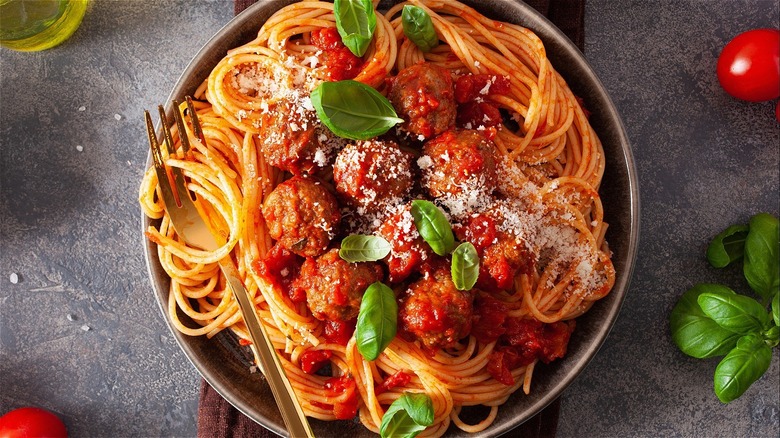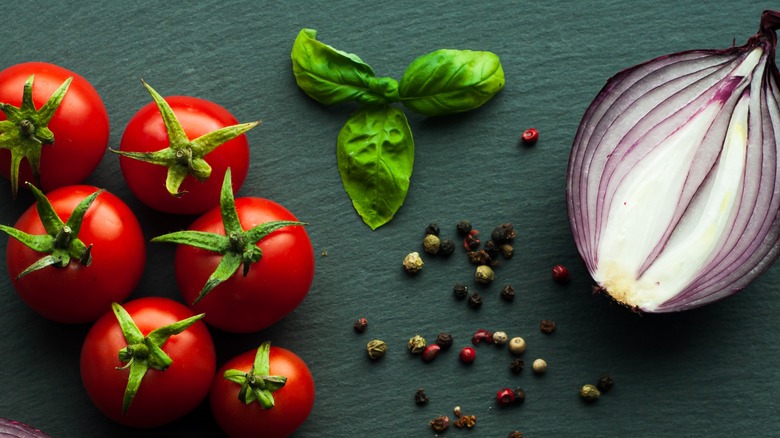When You Should Be Adding Basil To Spaghetti Sauce
On those hectic days that make getting dinner on the table nearly impossible (every Monday through Friday), pasta can be a lifesaver. Inexpensive and quick cooking, a pound of pasta topped with your favorite pasta sauce can get the family around the table in about 30 minutes.
As convenient as jarred sauces are, most are loaded with ingredients you don't want to feed your family. With high amounts of fat, sugar, and salt, these shelf staples may not give your family the healthy meal you intended. While a jar of marinara sauce has less fat than Alfredo or pesto, some brands may contain as much as 25% of the recommended daily allowance of sodium. Consumers should check the nutrition label to see exactly what they are getting or make their own (per SF Gate).
Some pasta sauces like short rib ragú require hours of cooking to develop a deep flavor. Most long-simmering sauces contain meat, like a Bolognese sauce (per La Cucina Italiana). However, a simple marinara, sugo, or red sauce takes as much time to prepare as boiling the water and cooking the pasta. With as little as four pantry staples and aromatics like basil, a healthier pasta sauce can be made in your kitchen with slightly more effort than opening a jar plus; you can make enough to freeze for another meal (via Delicious).
Add basil at the end
Kitchen staples such as onion, canned whole peeled plum tomatoes, butter, and salt are all that's needed to make the godmother of Italian cooking, Marcella Hazan's tomato sauce. Add to that fresh aromatics like basil, and it's guaranteed to be better than anything at the supermarket. Hazan's recipe is simple; it doesn't even require dicing the onion, but before you throw all the ingredients in the pot, hold off on adding the additional component, basil.
Delicate herbs like basil will break down too quickly if added to a simmering sauce too early. While dried basil or woodsy herbs like rosemary can withstand the heat and should be added at the beginning of the cooking process, fresh basil will end up shriveled at the bottom of the dish (via StackExchange). Instead, allow the sauce to cook until thickened and almost ready to be served.
Wash and thoroughly dry the basil, removing the leaves from the stem before adding it to the sauce. To keep it simple, add basil leaves whole or torn by hand, or run your knife through it. A few minutes before the tomato sauce is done, add the basil (via Our Everyday Life). When the herb hits the heat, it will release its oils and reward you with a beautiful aroma, slightly peppery with a hint of mint (via The New York Times). The basil flavor will be at its peak in time to get everyone to the table for dinner.

